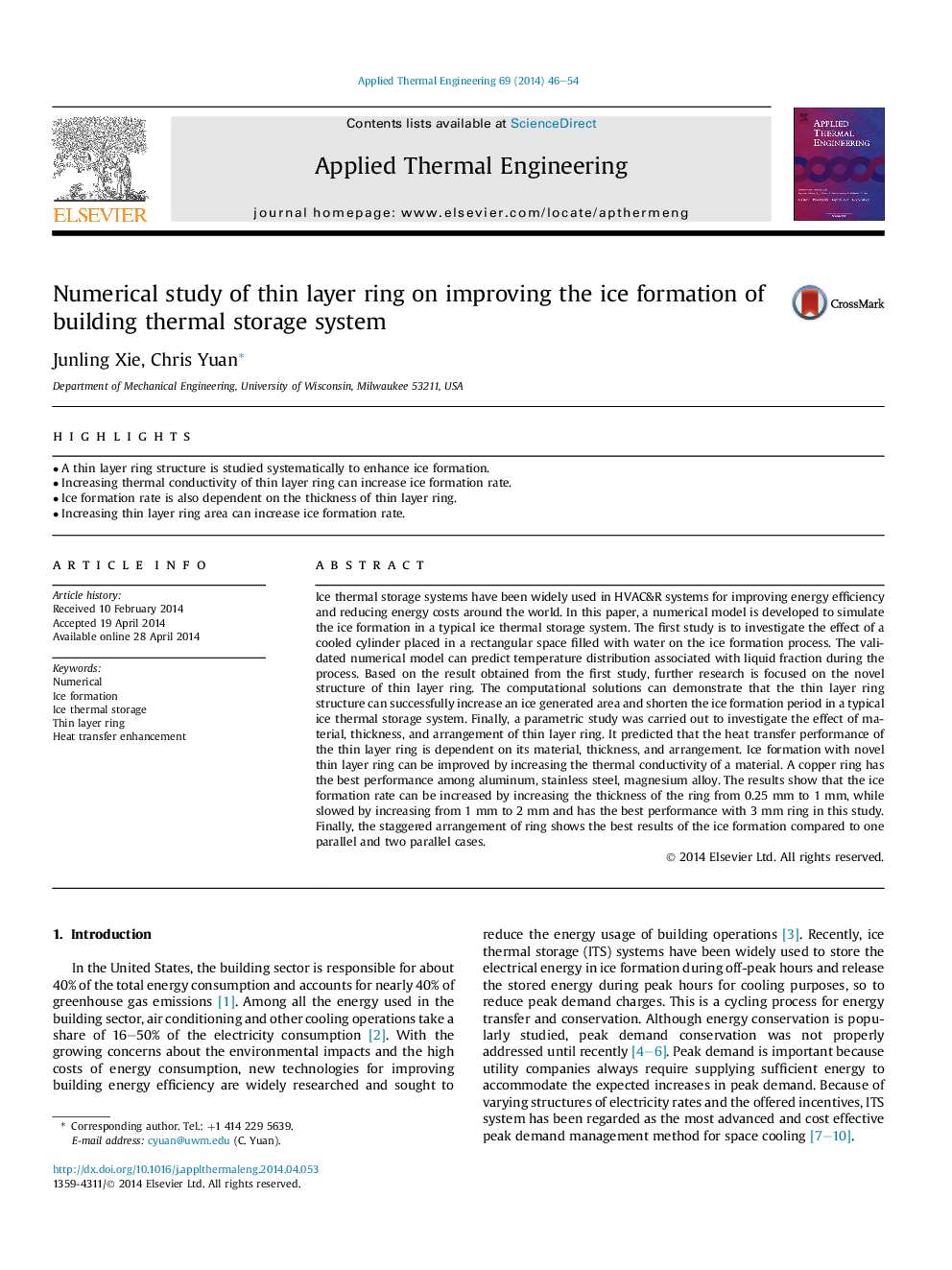| Article ID | Journal | Published Year | Pages | File Type |
|---|---|---|---|---|
| 7049033 | Applied Thermal Engineering | 2014 | 9 Pages |
Abstract
Ice thermal storage systems have been widely used in HVAC&R systems for improving energy efficiency and reducing energy costs around the world. In this paper, a numerical model is developed to simulate the ice formation in a typical ice thermal storage system. The first study is to investigate the effect of a cooled cylinder placed in a rectangular space filled with water on the ice formation process. The validated numerical model can predict temperature distribution associated with liquid fraction during the process. Based on the result obtained from the first study, further research is focused on the novel structure of thin layer ring. The computational solutions can demonstrate that the thin layer ring structure can successfully increase an ice generated area and shorten the ice formation period in a typical ice thermal storage system. Finally, a parametric study was carried out to investigate the effect of material, thickness, and arrangement of thin layer ring. It predicted that the heat transfer performance of the thin layer ring is dependent on its material, thickness, and arrangement. Ice formation with novel thin layer ring can be improved by increasing the thermal conductivity of a material. A copper ring has the best performance among aluminum, stainless steel, magnesium alloy. The results show that the ice formation rate can be increased by increasing the thickness of the ring from 0.25Â mm to 1Â mm, while slowed by increasing from 1Â mm to 2Â mm and has the best performance with 3Â mm ring in this study. Finally, the staggered arrangement of ring shows the best results of the ice formation compared to one parallel and two parallel cases.
Related Topics
Physical Sciences and Engineering
Chemical Engineering
Fluid Flow and Transfer Processes
Authors
Junling Xie, Chris Yuan,
